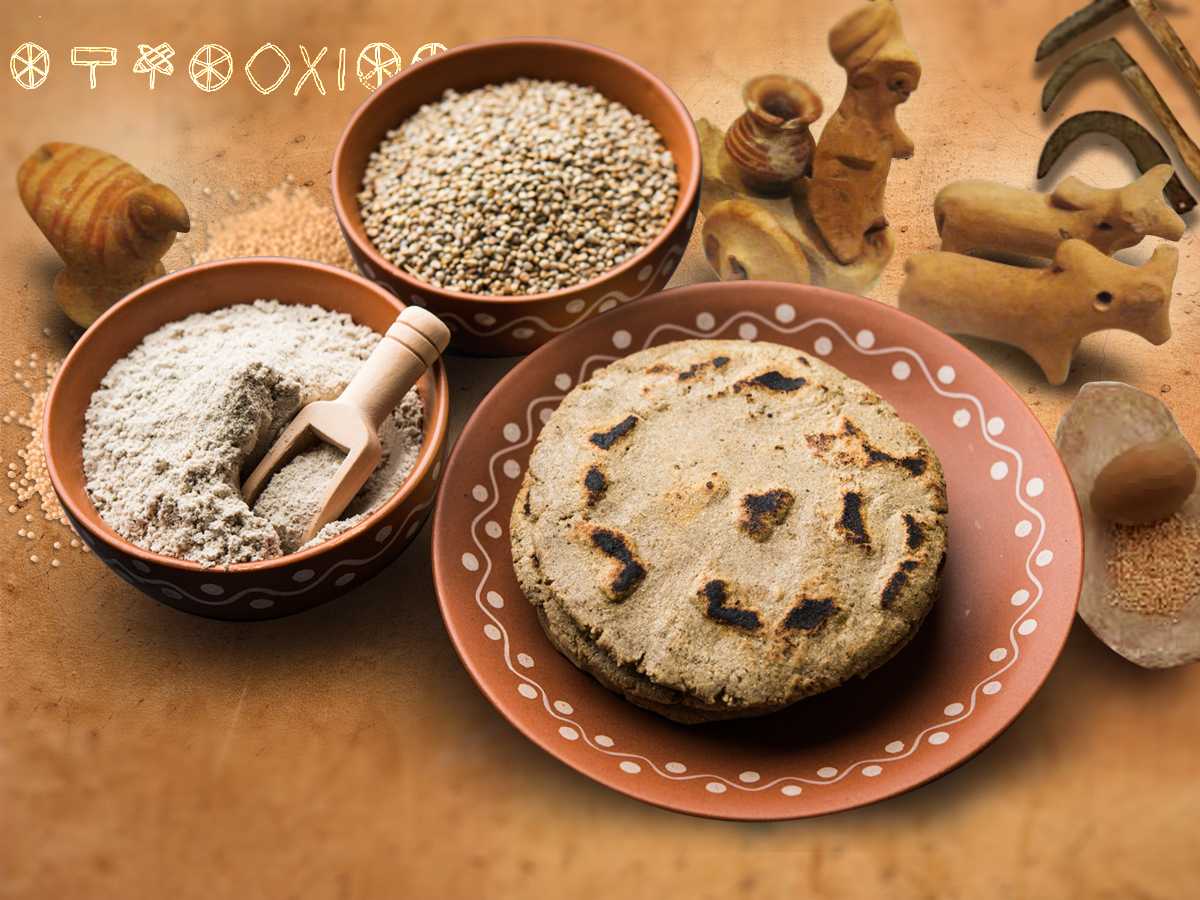The Yajur Veda texts, identify foxtail millet (Priyangava), barnyard millet (Aanava), and black finger millet (Shyamala), thus indicating that millet consumption was very common, pre-dating to the Indian Bronze Age (4,500BC). Indian Vedic scriptures like Satapatha Brahmana have ample references to millets.
Millet which has acquired an international standing amongst the nutritionists and health conscious of the world has been in use and existent in india, as an ancient crop and holds great importance in the agriculture of india, as millet crops flourished, in the Indus -Sarasvati civilization, between
The Yajur Veda texts, identify foxtail millet (Priyangava), Barnyard millet (Aanava), and black finger millet (Shyamala), thus indicating that millet consumption was very common, pre-dating to the Indian Bronze Age (4,500BC). Indian Vedic scriptures like Satapatha Brahmana have ample references to millets. More than 50 million in India, mainly the different tribes from Maharashtra, Rajasthan, Karnataka Kerala, Tamil Nadu, and Odisha have woven millets into the tapestry of their daily food. Be it Bajra rotis or Jawahar khichdi, or dishes like Mandia, Sijha, Pitha, Machina from Orissa, Ragi mudde from Karnataka, while some are transformed into different forms of porridge, kheers, and delicacies like dumplings steamed in jackfruit leaves cooked for special occasions. Korangati is a dish from Attappady, Kerala, made with finger millets. Kandul Raav, Nachni Sattva, and Mandia Tampa are also some of the millet delicacies, cooked over an open fire.
The native farmers have recognized millet – as an intrinsic part of Indian culinary heritage With the recent interest and research on the nutritional value and benefits of millet cultivation, the government has taken to large-scale promotion and even named this year as the year of the Millet.
I had this golden opportunity to visit the Blue Mountains, popularly known as Nilgiris, which has an enthralling history behind it. The captivating hilly regions have been home to wildlife and different tribes for centuries, till the British subjugated it.
The Nilgiris was under the rule of the Tippu Sultan before it was ceded to the East India Company in 1799, by a treaty of Srirangapatnam. The first Britisher who visited Nilgiris was John Sullivan, who started developing a British settlement and community there. The lush, peaceful, and untouched forests of the Nilgiris, in the past, had been home to six indigenous tribes the Badagas, Todas, Kotas Kurumbas, and Paniyars.
The traditional food of the Badigas was millet-based, and many heritage recipes were handed down from generation to generation. The fertile region was favorable for the cultivation of millet, spices, fruits, and vegetables, especially root vegetables. With the advent of the British, large areas of land belonging to the tribals were usurped. The English soon had vast tea plantations planted, and also vegetables, which replaced the traditional millet farming.
Today Dishes like Ganjike made from barley are almost distinct. The main presiding dish in the food of the Badagas used to be millet, in its various forms Kike Ragi, Jowhar, foxtail millet, Kodo millet, pearl millet, etc. This was converted into a variety of dishes, like Ragi Mudde, Thinai Kanji, Samba dosa, and Steamed idlis. Millets of all varieties were dominant in their cuisine, done in mud pots, called Madake, which were placed on the traditional wood-fired earthen stove, referred to as Ole’ Some of their popular dishes are. Ottu Kudi curry, Avaray with Gaasu Udhakka (Beans with Potato Curry), Badaguru Koi Udaka (Badaga Chicken Curry)Thinai butter biryani Thupadittu a popular sweet dish. Hatchike is made using little millet or Samai. Another millet dish Ragi Hittu or Ragi Mudde is made of finger millet and is a healthy alternative to rice and wheat. Dishes like Ganjike made from barley are almost distinct.
Recently the Millet is seeing a revival with new innovative dishes being introduced in hotels, restaurants, and health-conscious households. The versatile millet can be transformed into any dish one chooses and it is inventive creativeness that gives life to this ancient grain.
The potential health benefits of millet, include protecting cardiovascular health, preventing the onset of diabetes, and managing weight. This is the year of millets and hopefully, a lot of Indians, who still possess ancestral land will resume millet cultivation, instead of selling it for commercial use. Chef ramaa shanker aiyer.

